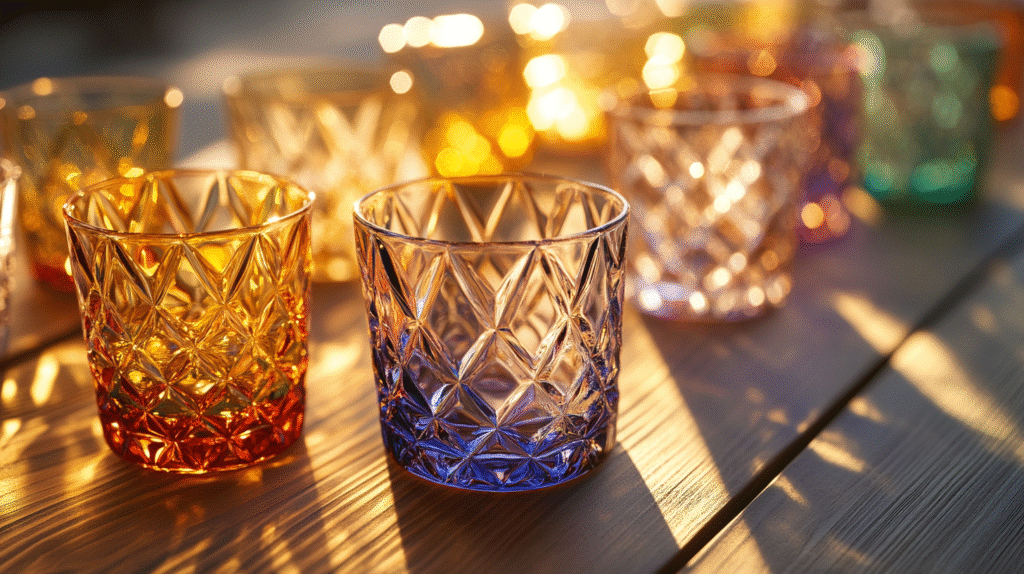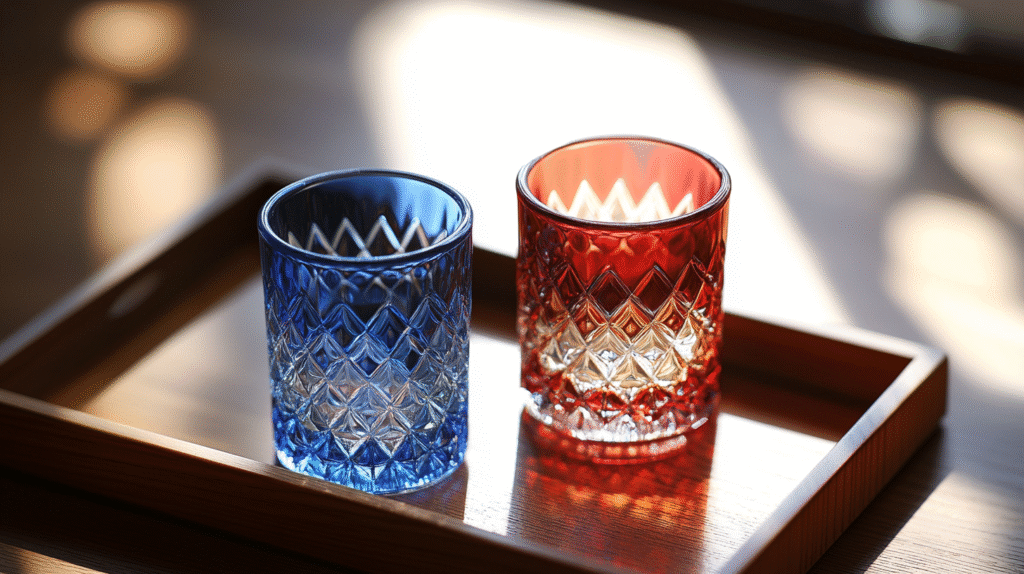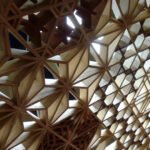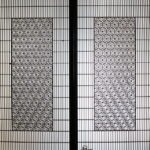Among Japan’s treasure trove of traditional crafts, Edo Kiriko glassware stands out with its particularly luminous presence. These meticulously cut glass pieces, adorned with precise geometric patterns that refract light in captivating ways, represent a perfect fusion of traditional Japanese aesthetics with Western glass-cutting techniques. This article explores the multifaceted allure of Edo Kiriko glassware, from its historical origins to contemporary developments.
The Birth and Historical Background of Edo Kiriko Glassware
The history of Edo Kiriko glassware traces back to the late Edo period (1804-1830), specifically during the Bunka-Bunsei era. Japanese craftsmen, fascinated by European cut glass imported through Nagasaki and Yokohama ports, began developing their own distinctive techniques.
A particularly significant figure in this development was Kagaya Kyubei, a glass artisan from Edo (present-day Tokyo). He applied cutting techniques to glass works and named the resulting craft “Edo Kiriko,” setting it on a path of unique development. The term “Kiriko” literally means “cut glass” in Japanese, while “Edo” refers to the old name for Tokyo, where this craft originated.
Initially, primarily blue glass was used (the prototype of today’s “color-coated cut glass”), but following the Meiji Restoration in 1868, the craft evolved further through integration with Western technologies. The Philadelphia World Exposition of 1877 proved particularly pivotal, bringing international recognition to Edo Kiriko glassware.
Throughout its history, Edo Kiriko glassware has faced numerous challenges. The Great Kanto Earthquake of 1923 and air raids during World War II damaged many workshops, nearly resulting in the loss of traditional techniques and designs. Nevertheless, through the persistent efforts of dedicated artisans, these skills were preserved, and in 1985, Edo Kiriko glassware was officially designated as a Traditional Craft by the Japanese government.

Characteristics and Production Process of Edo Kiriko Glassware
The most distinctive feature of Edo Kiriko glassware is its intricate patterns and the beautiful brilliance that emerges when light strikes the glass. The basic production process involves:
- Creating the Base Glass: First, the base glass is created. There are two main types: using clear transparent glass alone, or “overlay glass” (called “kise-garasu” in Japanese) where colored glass is covered with a layer of clear glass. With overlay glass, the cut patterns appear white against the colored background, creating a striking contrast.
- Pattern Design: Next, the pattern to be carved into the glass is designed. Traditional motifs include “nanako” (fish roe), “kagome” (basket weave), and “asanoha” (hemp leaf) patterns, reflecting Japanese aesthetic sensibilities. In recent years, original designs have also become more prevalent.
- Grinding and Cutting: Once the design is determined, the artisan presses the glass against rotating grinding wheels, keeping them wet, to carve the patterns. This process demands exceptional skill and experience from the craftsman. A single piece may require dozens of different grinding wheels, with the process divided into multiple stages from rough cutting to finishing.
- Final Polishing: Finally, the piece is washed and given a final polish to complete the work.
This traditional method remains fundamentally unchanged in modern times, with the skilled hands of an experienced artisan essential to creating each piece. Particularly challenging is the control of cutting depth—too deep and the glass may crack, too shallow and the pattern lacks definition. This exquisite sense of balance can only be developed through years of experience.
Representative Patterns and Colors of Edo Kiriko Glassware
The diverse patterns and colors are essential elements in discussing the appeal of Edo Kiriko glassware.

Representative Patterns
- Nanako (Fish Roe) – A pattern of numerous small, round indentations resembling fish eggs.
- Kagome (Basket Weave) – A hexagon-based pattern resembling woven baskets.
- Asanoha (Hemp Leaf) – A traditional Japanese pattern combining hexagons.
- Kikka (Chrysanthemum Flower) – Radiating straight lines carved to represent chrysanthemum petals.
- Kiku-Jimon (Chrysanthemum and Grid) – A complex pattern combining chrysanthemum flowers with grid patterns.
- Yarai (Bamboo Fence) – A pattern of continuous diagonal crosses.
- Hoshi-Kiriko (Star Cut) – Star-based patterns.
In addition to these traditional designs, each workshop and artisan has developed original patterns, with the total number reportedly reaching several hundred variations.
Traditional Colors
The colors of Edo Kiriko glassware are also distinctive features:
- Ruri-iro (Lapis Lazuli Blue) – A deep blue considered the most traditional Edo Kiriko color.
- Beni-iro (Crimson) – A vivid red color.
- Midori-iro (Green) – A deep green shade.
- Ki-iro (Yellow) – A color reminiscent of mountain rose or amber.
- Murasaki-iro (Purple) – An elegant purple color evoking wisteria or iris.
These colors are expressed through the overlay glass technique, each creating a different impression.
Contemporary Developments in Edo Kiriko Glassware
While maintaining its history as a traditional craft, Edo Kiriko glassware continues to evolve in various ways in the contemporary era.
Fusion of Tradition and Innovation
Modern Edo Kiriko glassware exhibits many new approaches while preserving traditional techniques, such as:
- Adoption of contemporary, minimalist designs
- Application to Western tableware like wine and cocktail glasses
- Extension into jewelry and accessories
- Utilization in lighting fixtures and interior decorations
These new initiatives have helped spread the appeal of Edo Kiriko glassware to younger generations.
Certification Systems and Successor Training
To preserve and transmit Edo Kiriko techniques, certification systems like “Tokyo Traditional Craftsman” and “Traditional Craftsman of Traditional Craft Industries Designated by the Minister of Economy, Trade and Industry” have been established. Works by artisans with these certifications guarantee authentic quality and traditional techniques.
Efforts are also being made in successor training, with educational programs at institutions like Tokyo Metropolitan College of Industrial Technology and apprenticeship systems maintained in various workshops.
International Recognition
As a Japanese glass craft, Edo Kiriko glassware has gained high recognition overseas. In recent years, with increasing interest in traditional Japanese crafts, collectors from Europe, America, and Asian countries have grown. Edo Kiriko glassware has also received increasing attention at international design exhibitions and competitions.
Conclusion: Japanese Beauty Woven with Light and Technique
Edo Kiriko glassware represents more than mere craft—it’s an artistic crystallization of Japanese aesthetics and technical prowess. Its continued evolution while preserving traditional techniques symbolizes the vitality of Japanese traditional crafts.
The charm of Edo Kiriko glassware, which shows various expressions through light, deepens with use and observation. If you have the opportunity, we encourage you to experience firsthand the sparkling world of this remarkable Japanese glass art.
Whether appreciated as functional art for daily use or as collectible display pieces, Edo Kiriko glassware continues to captivate with its perfect balance of traditional craftsmanship and timeless beauty, earning its place as one of Japan’s most internationally recognized traditional crafts.
Explore More Free Downloadable Resources
If you’re interested in discovering more freely downloadable historical Japanese art resources for your creative projects, click the banner below. Our curated collection includes additional ukiyo-e prints, kimono pattern books, and rare illustrated manuscripts that offer authentic glimpses into Japan’s artistic heritage. Continue your journey through the floating world and beyond with these carefully selected visual treasures from Japan’s golden age of woodblock printing.




